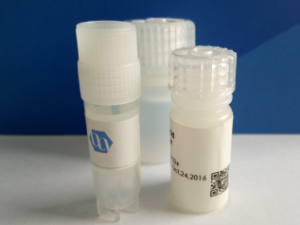$ 8,550.0
Quantity: 5 MG
In stock
Description
Product name: Nisin
Catalog#: 1381007
Organism: Streptococcus lactis
Synonyms: Streptococcus lactic peptide,
CAS NO.: 1414-45-5
Sequence: Ile-Dhb-(Ser-Ile-Dha-Leu-Cys)-(Abu-Pro-Gly-Cys)-Lys-(Abu-Gly-Ala-Leu-Met-Gly-Cys)-Asn-Met-Lys-(Abu-Ala-[Abu-Cys)-His-Cys]-Ser-Ile-His-Val-Dha-Lys
Modifications: (Z)-2,3-didehydrobutyrine(Dhb2),Lanthionine (Ser3-Cys7),2,3-didehydroalanine(Dha5),Beta-methyllanthionine(Thr8-Cys11),Beta-methyllanthionine(Thr13-Cys19),Beta-methyllanthionine(Thr23-Cys26),Beta-methyllanthionine(Thr25-Cys28), 2,3-didehydroalanine(Dha33),
M.W: 3354.09
M.F.: C143H230N42O37S7
Purity: 95%
Format: White powder
Description: Nisin is the first, and so far only lantibiotic to have found commercial use. Discovered in 1928, it exhibits a broad spectrum of inhibition against Gram positive bacteria including spoilage and food-borne pathogens such as staphylococci, bacilli, clostridia and Listeria. Nisin has been extensively used in the food industry as a food preservative for decades gaining both EU (E234) and Food and Drug Administration (FDA) approval and has been employed in a wide variety of foods. Nisin acts by altering the integrity of the cellular membrane and forming short-lived pores, thereby changing the membrane potential. Nisin becomes immersed in the cell membrane through the cationic portions of the amino acids extending to one side of the molecule. These cationic portions interact with the negatively charged phospholipid heads, while the hydrophobic portion of nisin interacts with the membrane core. Nisin’s involvement with the membrane, therefore, mediates phospholipid reorganization and allows for an influx of ions. Nisin is known to preferentially interact with phosphatidylcholine.
Uniprot ID:
Usage: For Scientific Research Use Only, Not for Human Use.

